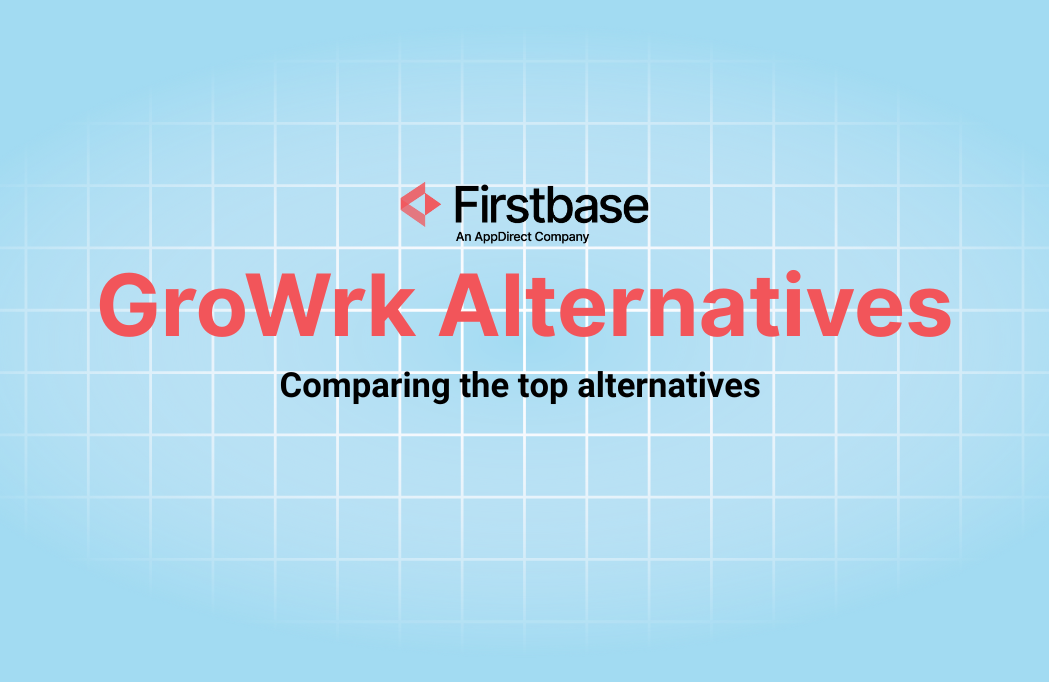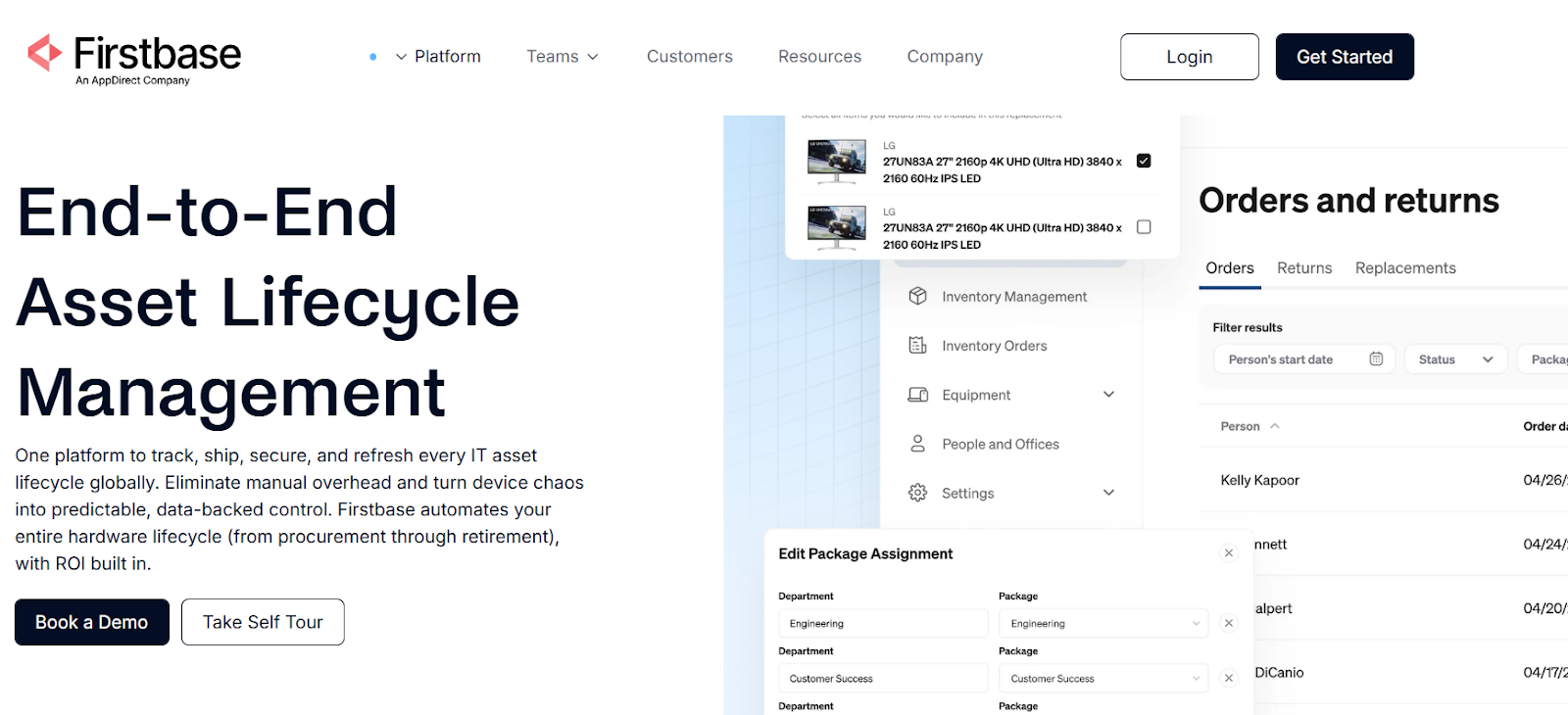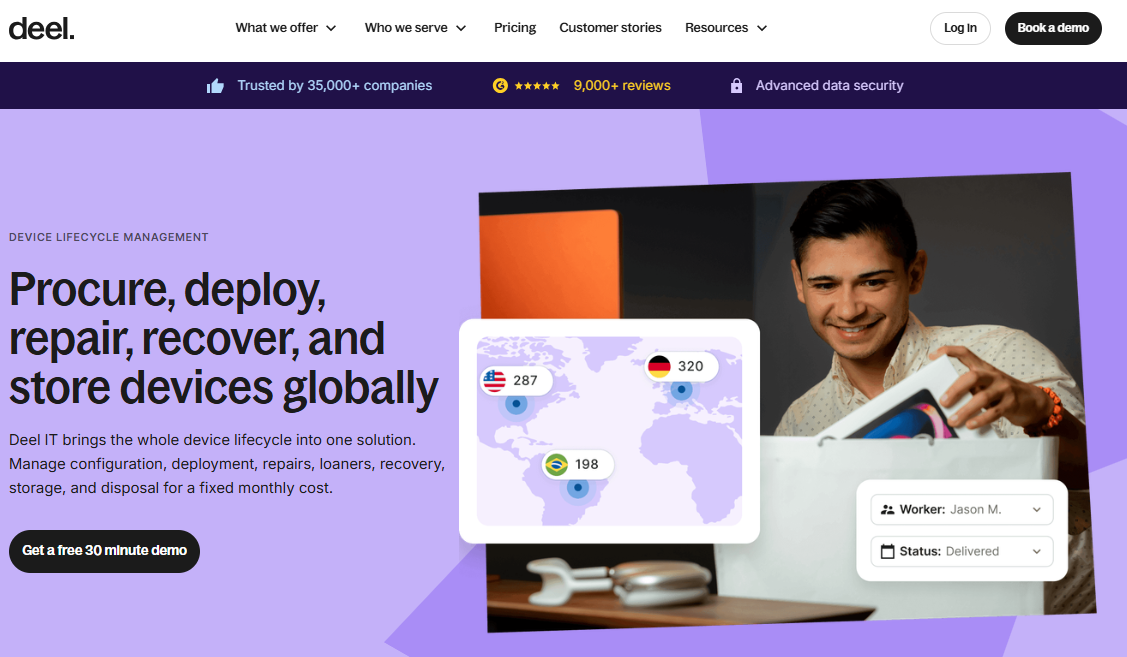Gartner highlights Firstbase in 2025 MDLS Guide for second year in a row >> Get the guide >>
Skip to main content

When you’re running IT or Finance for a 100 to 5,000-person distributed team, every laptop delay shows up as wasted payroll and blown budgets. Logistics shouldn’t be another source of friction.
Many companies turn to GroWrk, which promises end-to-end IT asset management across 150+ countries. It works for some, but most users often run into limits:
Reviews also cite delays in Windows Autopilot imports and frustrations with account management. Add in premium tiers that squeeze SMEs, and it’s clear why teams start exploring other options. So, you need a partner that takes care of your asset lifecycle, not just logistics.
This blog breaks down the hidden costs behind these issues and compares real alternatives so you can choose a solution that keeps onboarding smooth, budgets predictable, and downtime minimal.
Don’t just compare vendors on paper; explore how lifecycle automation works in practice. Take a self-guided product tour and see how Firstbase achieves 75%+ automation, with over $ 163,000 saved annually across global fleets.
GroWrk’s “small” delays rarely stay small. They pile into budget overruns, stalled onboarding checklists, and the dreaded Slack pings from new hires asking why their laptop still hasn’t arrived.
Every delayed shipment or integration gap means employees waiting idly and IT teams spinning up avoidable tickets. Let’s put numbers behind it.
Take onboarding delays. Let’s start with a single new hire. At a $70,000 annual salary, the daily cost of an idle employee is about $269 (70,000 ÷ 260 workdays).
If their laptop arrives two days late, that’s $538 in wasted payroll before they even log in. Scale that across 100 hires, and you’re looking at $53,800 in lost productivity, just from day-one delays.
And the damage doesn’t stop at payroll. Delays also increase the likelihood of shadow IT, the use of unsecured personal devices, and compliance gaps that put sensitive data at risk.
Support tickets add hidden labor costs. Delays sideline new hires, but they also create more work for IT. Employees waste about 22 minutes every workday on IT-related issues. Over a year (five 8-hour days × 50 weeks), that’s more than 91 hours lost per employee.
For IT support staff themselves, the loss is even costlier: with the average U.S. IT Support Engineer earning $47/hour, that wasted time equals $4,277 per engineer, per year.
Even modest teams feel the hit — a 10-person IT support group wastes nearly $43,000 annually on preventable issues tied to device delays and poor vendor execution.
And that’s just a baseline. There are also softer but very real impacts: frustrated hires, extra recruiter effort, and HR rework when onboarding drags.
Downtime was the visible leak. The actual problem begins when devices never return. Every unreturned laptop is both a compliance risk that lands on your desk and a line item your auditors will flag in the next quarter.
Now, if you look at the whole lifecycle: companies routinely fail to get gear back, and that gap is expensive. Many enterprise programs only reclaim 30-50% of devices, meaning half (or more) of your fleet never returns to inventory.
Put that into context: a single high-end laptop ($4,000 Mac, for example) that isn’t returned after one year has effectively lost its redeployable value.
If you issued 100 such devices and recovered only 30-50, you’re left with 50-70 unrecovered units. That is $200k-$280k of hardware at list price sitting off the books.
The visible hardware hit is only part of the bill.
Enterprises spend 500 IT hours for every 100 remote employees managing retrievals, repairs, and redeployment. That’s time pulled from strategic work into logistics and chasing returns.
There’s a finance ripple too: missing devices trigger surprise purchase orders, unexpected freight costs on rush replacements, and depreciation that distorts the P&L.
Peripheral kits (monitors, docks, headsets) often cost as much as or more than laptops and rarely come back, multiplying the loss.
And yes, there’s risk beyond dollars. Lost drives and untracked equipment have led to major security incidents and regulatory fines in the millions (up to 35M as in Morgan Stanley’s case).
The right Growrk alternative automates the entire lifecycle, keeps costs forecastable, and scales with your workforce. Below, we break down the top platforms in 2025 and what makes each worth considering.

Firstbase is an IT asset lifecycle automation platform that streamlines procurement, deployment, support, and recovery into one system. Instead of juggling multiple vendors, teams manage everything from a single dashboard.
The platform integrates directly with HRIS and MDM tools to trigger onboarding and offboarding automatically, while finance teams gain predictable, per-seat cost control.
With end-to-end visibility, companies can reduce idle stock, avoid budget leakage, and reclaim value from unused devices. The result: fewer IT tickets, faster employee onboarding, and measurable savings on both operations and hardware spend.
Enterprises managing 50-5,000+ global employees who require fast onboarding, predictable costs, and tight asset control.
Firstbase is especially effective for organizations, where reducing onboarding time, recovering all issued devices, and cutting hardware loss rates drives millions in measurable savings.
GroWrk may deliver devices globally, but Firstbase turns device logistics into predictable, insight-led outcomes. And if you’re wondering about switching over, the transition isn’t disruptive. On average, a 500-device fleet can be migrated in just 12 business days, with no need to run dual systems and no visibility gaps during cut-over.
And the payoff: fewer employee complaints about missing laptops, 97% recovery rates that hold up under audit, and financial forecasts your leadership can rely on without last-minute changes.
The platform helps you avoid blind spots like orphaned or idle stock, eliminate long onboarding delays (under a week), and convert retired devices into value.
Still weighing your options? Book a 30-minute session with our team. We’ll walk through your current device lifecycle, map the hidden costs, and show you what predictable recovery and global SLAs look like with Firstbase.

CDW is a multi-brand IT reseller and services integrator across the US, UK, and Canada that pairs multinational logistics with OEM relationships and local governance. It moves beyond simple ordering: staging, project-based engagements, and maturity assessments.
Its ongoing ITAM services give teams a structured path to predictable asset lifecycle outcomes and clearer procurement control.
Enterprises and regulated organizations that need local execution, program governance, and predictable vendor accountability.

ManageEngine AssetExplorer is an IT asset management platform built for IT teams that want visibility and control without a long rollout. Available on-premises or in the cloud, it combines automated discovery, license compliance, purchase and contract management, and a CMDB for configuration oversight.
With custom workflows and dashboards, AssetExplorer gives IT managers end-to-end visibility to cut costs, stay audit-ready, and improve decision-making.
IT teams in mid-sized to large organizations that need structured governance across hardware, software, and contracts, while staying audit-ready year-round. Its dual deployment model suits both cloud-first companies and those requiring on-prem compliance.

SHI International manages your device lifecycle from procurement to end-of-life. It has integration centers that run configuration and deployment at scale. The flexible financing options help organizations plan spending more effectively. Certified to ISO 9001:2015, SHI also supports repairs, replacements, and secure asset recovery.
Its modular service model lets enterprises control costs, reduce downtime, and meet sustainability and compliance standards without adding internal overhead.
Enterprises managing diverse device fleets across multiple geographies that need scalable procurement and secure, sustainable end-of-life processes.

ServiceNow ITAM centralizes hardware, software, and cloud asset management into one platform. Built on the ServiceNow AI Platform, it automates lifecycle workflows, improves license compliance, and reduces technology risk.
From onboarding to disposal, ITAM delivers enterprise-scale visibility, contract and renewal management, and actionable insights that help organizations cut costs, free up budget, and control IT sprawl.
Large enterprises with complex hardware, software, and cloud portfolios that need risk reduction and cost visibility across departments.

Workwize centralizes global procurement and IT asset management on a single platform. It automates every stage of the device lifecycle from ordering and MDM enrollment to repairs and secure offboarding. With 5-7 day delivery worldwide, real-time tracking, and compliance baked in, IT teams gain full visibility into assets while reducing manual effort.
For hybrid and distributed workforces, Workwize comes with logistics you can predict, less risk, and better employee experiences.
Organizations with distributed teams that want centralized procurement and complete visibility into IT assets across countries and time zones.

Hofy, rebranded under Deel IT, is a global IT services platform that centralizes device procurement, shipping, configuration, and support. It integrates with MDM and HRIS tools to automate provisioning, identity access, and app management. With real-time visibility into assets, policies, and orders, Deel IT offers a unified system for onboarding, offboarding, and lifecycle operations.
Companies can securely equip global teams, minimize downtime, and even recover residual value from retired devices.
Organizations scaling globally that need end-to-end device logistics and IT governance in one platform, with visibility across orders, invoices, and hardware status.
When you’re comparing Growrk with other platforms, what matters is the cost of every delay, ticket, and unreturned device. Use these five criteria to see which vendors can actually keep your operations moving.
Look beyond “best effort” promises. A laptop that arrives two weeks late costs lost productivity and higher attrition, more than freight. Always ask vendors for SLA-backed timelines, not vague estimates. Firstbase comes with SLA-backed delivery and pickups within 48 hours in 150+ countries, so your new hires start on time.
Look closely at how costs are structured. Vendors that bill per shipment or tack on freight surcharges create budget variance every quarter. When you use a per-seat model (like Firstbase offers) that bundles logistics, storage, and retrieval, you make expenses predictable and easy to forecast.
If your IT team spends hours per device coordinating shipments, imaging, or retrievals, you’re paying senior salaries for admin work. Evaluate how deeply a platform automates the lifecycle.
Firstbase automates onboarding (via HRIS/MDM integrations), retrievals (prepaid kits + reminders), and accessories (self-service IT closet), cutting ticket loads by up to 50%.
Ask whether the provider guarantees a full chain of custody and integrates compliance checks automatically. Without it, you risk fines, failed audits, or data breaches from unretrieved devices. Firstbase auto-uploads Certificates of Destruction to device records and follows NIST 800-88 standards. Every device record stays matched from Day 1 to end-of-life.
Siloed systems create rework, errors, and onboarding delays. The right vendor should offer pre-built, secure integrations with your HRIS, MDM, and ITSM platforms. Take Firstbase, which integrates with Workday, BambooHR, ADP, Okta, Jamf, Intune, ServiceNow, Jira, and 100+ apps.
This means new hires trigger automatic device orders, security baselines are enforced before shipping, and IT, HR, and Finance work from the same real-time data stream.
If you’ve read this far, you know the real cost of IT asset management isn’t the asset itself. It’s the hours lost, the budget variance, and the gear that never makes it back.
End-to-end lifecycle isn’t rare on paper; proving it in practice is. Firstbase recovers 97%+ of devices across 150+ countries, with every return logged for audit. That level of transparency gives IT fewer blind spots, Finance accurate forecasts, and HR smoother offboarding without compliance risk.
By standardizing retrievals, redeployment, and reporting, the platform has helped customers save 250+ IT hours in a year while doubling global headcount.
Run your own numbers. Use our ROI calculator to see what lost devices, hidden freight, and ticket time are costing you (and where Firstbase recovers it). Book a 30-minute demo to benchmark your fleet.